#wallops flight facility
Explore tagged Tumblr posts
Text

Crews preparing the Mercury Launch Escape System and Boilerplate Mercury Capsule for the LJ-1 mission, for stacking atop of the Little Joe rocket.
Date: August 20, 1959
NASA ID: link
#Little Joe 1#LJ-1#Mercury Boilerplate#Boilerplate#Little Joe#Rocket#NASA#Mercury Program#Project Mercury#Mercury#Wallops LA-1#LA-1#Wallops Flight Facility#WFF#Wallops Island#Virginia#August#1959#my post
35 notes
·
View notes
Text
NASAs Wallops Flight Facility to Launch Student Experiments
More than 50 student and faculty teams are sending experiments into space as part of NASA’s RockOn and RockSat-C student flight programs. The annual student mission, “RockOn,” is scheduled to launch from Wallops Island, Virginia, on a Terrier-Improved Orion sounding rocket Thursday, June 20, with a launch window that opens at 5:30 a.m. EDT. An […] from NASA https://ift.tt/XUPOGWe
1 note
·
View note
Text
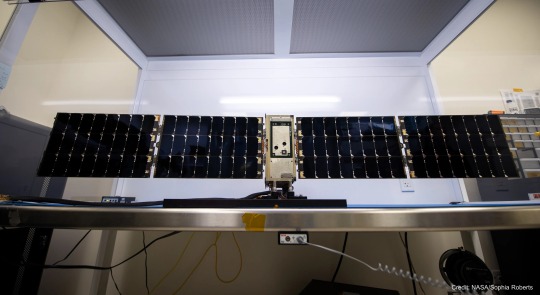
Tiny BurstCube's Tremendous Travelogue
Meet BurstCube! This shoebox-sized satellite is designed to study the most powerful explosions in the cosmos, called gamma-ray bursts. It detects gamma rays, the highest-energy form of light.
BurstCube may be small, but it had a huge journey to get to space.
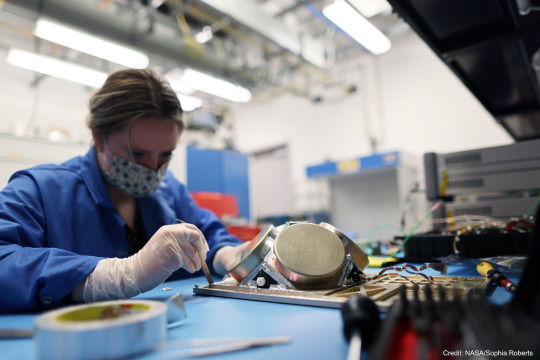
First, BurstCube was designed and built at NASA’s Goddard Space Flight Center in Greenbelt, Maryland. Here you can see Julie Cox, an early career engineer, working on BurstCube’s gamma-ray detecting instrument in the Small Satellite Lab at Goddard.
BurstCube is a type of spacecraft called a CubeSat. These tiny missions give early career engineers and scientists the chance to learn about mission development — as well as do cool science!
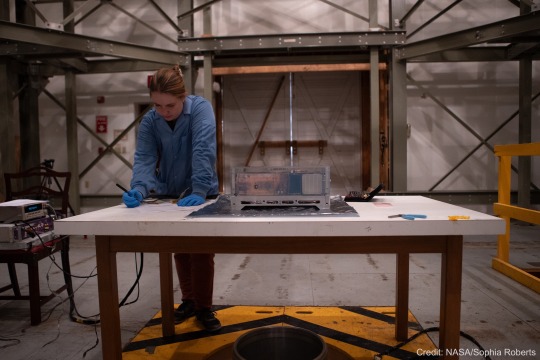
Then, after assembling the spacecraft, the BurstCube team took it on the road to conduct a bunch of tests to determine how it will operate in space. Here you can see another early career engineer, Kate Gasaway, working on BurstCube at NASA’s Wallops Flight Facility in Virginia.
She and other members of the team used a special facility there to map BurstCube’s magnetic field. This will help them know where the instrument is pointing when it’s in space.
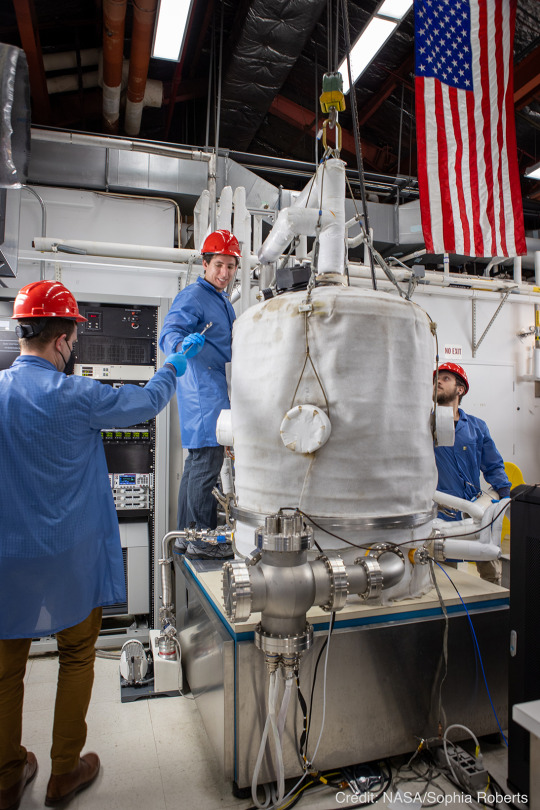
The next stop was back at Goddard, where the team put BurstCube in a vacuum chamber. You can see engineers Franklin Robinson, Elliot Schwartz, and Colton Cohill lowering the lid here. They changed the temperature inside so it was very hot and then very cold. This mimics the conditions BurstCube will experience in space as it orbits in and out of sunlight.
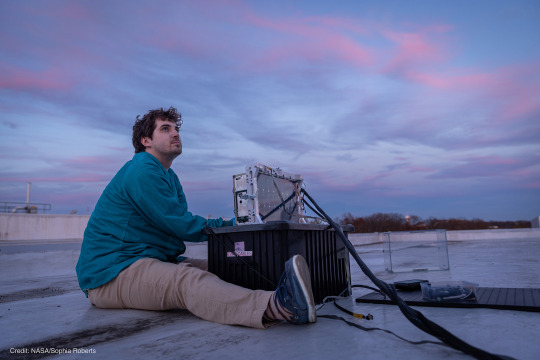
Then, up on a Goddard rooftop, the team — including early career engineer Justin Clavette — tested BurstCube’s GPS. This so-called open-sky test helps ensure the team can locate the satellite once it’s in orbit.
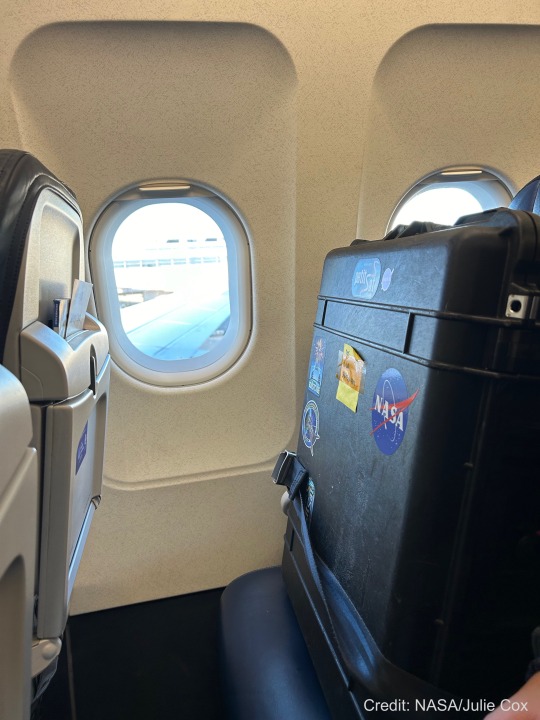
The next big step in BurstCube’s journey was a flight to Houston! The team packed it up in a special case and took it to the airport. Of course, BurstCube got the window seat!
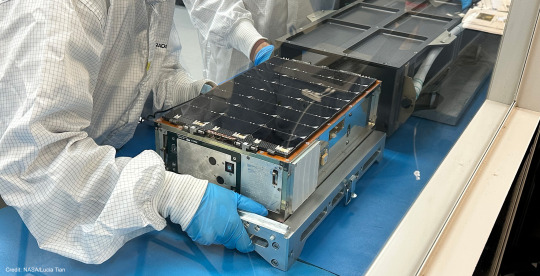
Once in Texas, the BurstCube team joined their partners at Nanoracks (part of Voyager Space) to get their tiny spacecraft ready for launch. They loaded the satellite into a rectangular frame called a deployer, along with another small satellite called SNoOPI (Signals of Opportunity P-band Investigation). The deployer is used to push spacecraft into orbit from the International Space Station.
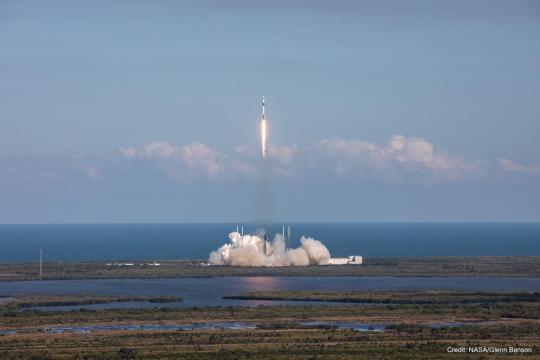
From Houston, BurstCube traveled to Cape Canaveral Space Force Station in Florida, where it launched on SpaceX’s 30th commercial resupply servicing mission on March 21, 2024. BurstCube traveled to the station along with some other small satellites, science experiments, as well as a supply of fresh fruit and coffee for the astronauts.
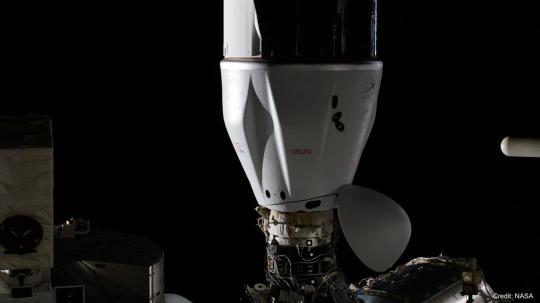
A few days later, the mission docked at the space station, and the astronauts aboard began unloading all the supplies, including BurstCube!
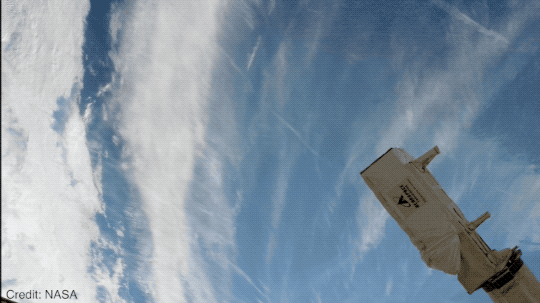
And finally, on April 18, 2024, BurstCube was released into orbit. The team will spend a month getting the satellite ready to search the skies for gamma-ray bursts. Then finally, after a long journey, this tiny satellite can embark on its big mission!
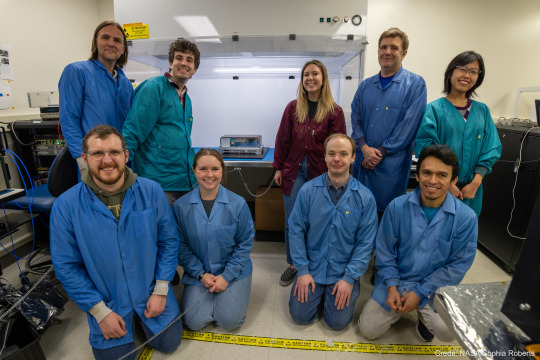
BurstCube wouldn’t be the spacecraft it is today without the input of many early career engineers and scientists. Are you interested in learning more about how you can participate in a mission like this one? There are opportunities for students in middle and high school as well as college!
Keep up on BurstCube’s journey with NASA Universe on X and Facebook. And make sure to follow us on Tumblr for your regular dose of space!
#tech#technology#dream job#jobseekers#NASA#space#spaceblr#universe#astronomy#science#gamma ray bursts#cubesat#smallsat#launch
660 notes
·
View notes
Text

Little Joe 1 on the launch pad at the Wallops Flight Facility in Virginia. August 21, 1959.
Little Joe 1 was meant to test the launch escape system for the Mercury spacecraft during a Max Q abort, when the spacecraft would be encountering the most stress during a launch. The launch escape system fired prematurely, 30 minutes before the scheduled launch of Little Joe 1. The cause was linked to an electrical fault in a coil designed to protect biological specimens from a rapid abort.
NASA NASA SP-4201, p. 208
12 notes
·
View notes
Text
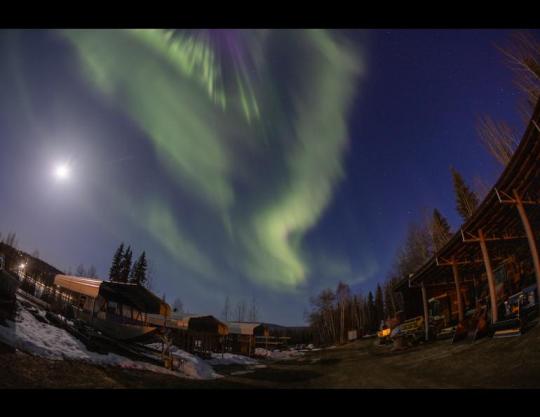
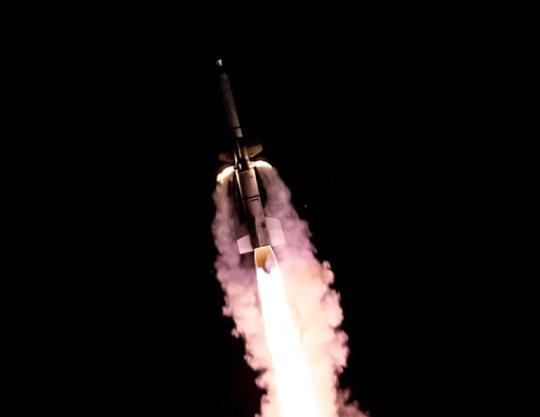

First results from 2021 rocket launch shed light on aurora’s birth
Newly published results from a 2021 experiment led by a University of Alaska Fairbanks scientist have begun to reveal the particle-level processes that create the type of auroras that dance rapidly across the sky.
The Kinetic-scale Energy and momentum Transport experiment — KiNET-X — lifted off from NASA’s Wallops Flight Facility in Virginia on May 16, 2021, in the final minutes of the final night of the nine-day launch window.
UAF professor Peter Delamere’s analysis of the experiment’s results was published Nov. 19 in Physics of Plasmas.
“The dazzling lights are extremely complicated,” Delamere said. “There’s a lot happening in there, and there’s a lot happening in the Earth’s space environment that gives rise to what we observe.
“Understanding causality in the system is extremely difficult, because we don’t know exactly what’s happening in space that’s giving rise to the light that we observe in the aurora,” he said. “KiNET-X was a highly successful experiment that will reveal more of the aurora’s secrets.”
Want more? Read the dramatic story of the KiNET-X mission in 12 short installments that include videos, animations and additional photographs.
One of NASA’s largest sounding rockets soared over the Atlantic Ocean into the ionosphere and released two canisters of barium thermite. The canisters were then detonated, one at about 249 miles high and one 90 seconds later on the downward trajectory at about 186 miles, near Bermuda. The resulting clouds were monitored on the ground at Bermuda and by a NASA research aircraft.
The experiment aimed to replicate, on a minute scale, an environment in which the low energy of the solar wind becomes the high energy that creates the rapidly moving and shimmering curtains known as the discrete aurora. Through KiNET-X, Delamere and colleagues on the experiment are closer to understanding how electrons are accelerated.
“We generated energized electrons,” Delamere said. “We just didn’t generate enough of them to make an aurora, but the fundamental physics associated with electron energization was present in the experiment.”
The experiment aimed to create an Alfvén wave, a type of wave that exists in magnetized plasmas such as those found in the sun’s outer atmosphere, Earth’s magnetosphere and elsewhere in the solar system. Plasmas — a form of matter composed largely of charged particles — also can be created in laboratories and experiments such as KiNET-X.
Alfvén waves originate when disturbances in plasma affect the magnetic field. Plasma disturbances can be caused in a variety of ways, such as through the sudden injection of particles from solar flares or the interaction of two plasmas with different densities.
KiNET-X created an Alfvén wave by disturbing the ambient plasma with the injection of barium into the far upper atmosphere.
Sunlight converted the barium into an ionized plasma. The two plasma clouds interacted, creating the Alfvén wave.
That Alfvén wave instantly created electric field lines parallel to the planet’s magnetic field lines. And, as theorized, that electric field significantly accelerated the electrons on the magnetic field lines.
“It showed that the barium plasma cloud coupled with, and transferred energy and momentum to, the ambient plasma for a brief moment,” Delamere said.
The transfer manifested as a small beam of accelerated barium electrons heading toward Earth along the magnetic field line. The beam is visible only in the experiment’s magnetic field line data.
“That’s analogous to an auroral beam of electrons,” Delamere said.
He calls it the experiment’s “golden data point.”
Analysis of the beam, visible only as a varying shades of green, blue and yellow pixels in Delamere’s data imagery, can help scientists learn what is happening to the particles to create the dancing northern lights.
The results so far show a successful project, one that can even allow more information to be gleaned from its predecessor experiments.
“It’s a question of trying to piece together the whole picture using all of the data products and numerical simulations,” Delamere said.
Three UAF students doing their doctoral research at the UAF Geophysical Institute also participated. Matthew Blandin supported optical operations at Wallops Flight Facility, Kylee Branning operated cameras on a NASA Gulfstream III aircraft out of Langley Research Center, also in Virginia, and Nathan Barnes assisted with computer modeling in Fairbanks..
The experiment also included researchers and equipment from Dartmouth College, the University of New Hampshire and Clemson University.
youtube
3 notes
·
View notes
Link
The NASA Aircraft Management Advisory Board (AMAB), which manages the agency’s aircraft fleet, has decided to relocate the agency’s P-3 aircraft at Wallops to Langley Research Center. The decision is part of a long-running, NASA-wide aircraft enterprise-management activity to consolidate the aircraft fleet where feasible and achieve greater operational efficiencies while reducing our infrastructure footprint. We all recognize this is a tough decision impacting a stellar, mission-focused team that has achieved so much over the years. I myself started my career in the Wallops Aircraft Office some 38 years ago, and my time there was foundational for all I’ve done in my career. My top priority is to work with the Aircraft Office team on a transition plan, and importantly, to carry out an effective and safe transition of the aircraft to NASA Langley, and to ensure the long term sustainability of NASA’s P-3 capability in support of the airborne science community. The Wallops aircraft office transition may take 18 to 24 months or more to accomplish. A specialized team is forming to ensure a smooth transition, and in the meantime, we continue to support airborne science from the facility. With NASA’s flying mission at Wallops relocating to Langley, we recognize that the hangars and airfield at Wallops are true regional assets with great potential. NASA will issue a request for information (RFI) to identify potential customers/interest in assuming responsibility for Wallops’ airfield operations. It’s in the best interest of NASA and the region to explore other uses and opportunities for the Wallops airfield, and this RFI will help NASA evaluate future options. There is no timeline for the RFI at this time – we will provide updates as more information becomes available. What we do know – and are fully committed to – is ensuring the airfield remains an important resource for continued use by our customers, such as the U.S. Navy’s Fleet Force Command Field Carrier Landing Practice program. We’ve supported Navy flight operations at Wallops for more than 10 years and that support continues. I want to assure everyone that Wallops’ future is bright and secure – the facility has a diverse mission set of orbital and suborbital operations and a whole host of government and commercial customers expanding operations on-site. We expect Wallops’ launch cadence to increase to upward of 50 launches per year by 2030 as the facility takes on a growing portfolio of hypersonics work as well as support to commercial spaceflight. Without a doubt, the Wallops Aircraft Team is the best in the agency. They’ve had a massively successful run of operations recently with the ARCSIX missions in Greenland to supporting student research flights on both coasts and cargo transport missions all over the world to places such as Antarctica and India. I am committed to working with every member of the team on a way forward as we transition our flight operations and seek new opportunities. We will continue to communicate with you and provide information on the transition plans as they become available. All the best, Dave David L. PierceWallops Director
2 notes
·
View notes
Text

Launch of a Northrop Grumman Antares Rocket with a Cygnus Resupply Spacecraft Onboard Pad-0A, NASA's Wallops Flight Facility, Wallops Island, Virginia image credit: Aubrey Gemignani/NASA
13 notes
·
View notes
Text
By: Passant Rabie
Published: April 11, 2023
When Dr. Makenzie Lystrup was sworn in as the new director of NASA’s Goddard Space Flight Center last week, she didn’t take her oath of office on the Bible or the U.S. Constitution, but rather on a tome revered by space enthusiasts everywhere: Carl Sagan’s Pale Blue Dot.
The book, published in 1994, is named after an iconic image of Earth, snapped by the Voyager I probe, that depicts the planet as a small speck smothered by the emptiness of space. That photo inspired astronomer Carl Sagan to write: “Look again at that dot. That’s here. That’s home. That’s us.” For many, the book serves as a reminder of humanity’s place in the universe and the need to preserve our home planet, which makes it similar to holy scripture for a newly appointed NASA director.
On Thursday, when Lystrup chose to place her left hand on a copy of Sagan’s book while being sworn in by NASA Administrator Bill Nelson, a photographer captured the moment, and NASA Goddard’s social media shared the image.
The constitution does not require that government officials be sworn in using a particular text, just that they “shall be bound by Oath or Affirmation, to support this Constitution.” Most U.S. politicians and officials end up using the Bible.
But over the years, many officeholders have improvised while taking their oath. In 2018, Mariah Parker was sworn in as a member of the Athens-Clarke County commissioners with her hand placed on a copy of “The Autobiography of Malcom X.” When former U.S. ambassador to Switzerland Suzi LeVine took her oath in 2014, she put a hand on her Kindle. Keith Ellison, the first Muslim to be elected to Congress, took his oath in 2007 using the Quran.
Sagan is a revered figure in the space sciences community for his pioneering contributions to space exploration. “Like many astronomers and space scientists, my passion started with watching Carl Sagan’s ‘Cosmos’ on public television as a child,” Lystrup, who is a planetary scientist like Sagan, said in an emailed statement. “Sagan worked very hard to make science accessible and meaningful to everyone, and ‘Pale Blue Dot’ emphasizes the importance of exploring our universe and understanding our home planet.”
“Given its personal significance to me and how its message resonates with the work we do at NASA Goddard on behalf of the world, it felt apropos to include it in the ceremony,” she added.
Lystrup will be the first female center director of the Goddard Space Flight Center, which includes a primary campus in Greenbelt, Maryland, as well as Wallops Flight Facility in Virginia, the Katherine Johnson Independent Verification & Validation Facility in West Virginia, the Goddard Institute for Space Studies in New York, the White Sands Complex in New Mexico, and the Columbia Scientific Balloon Facility in Texas.
Goddard is home to the nation’s largest concentration of scientists, engineers and technologists dedicated to Earth and space science, according to NASA.

#Makenzie Lystrup#Carl Sagan#Pale Blue Dot#science#NASA#Goddard Space Flight Center#oath#affirmation#bible#space science#decline of religion#representation fallacy#representation matters#religion is a mental illness
14 notes
·
View notes
Text
NASA 3D-Printed Antenna Takes Additive Manufacturing to New Heights - NASA
New Post has been published on https://sunalei.org/news/nasa-3d-printed-antenna-takes-additive-manufacturing-to-new-heights-nasa/
NASA 3D-Printed Antenna Takes Additive Manufacturing to New Heights - NASA
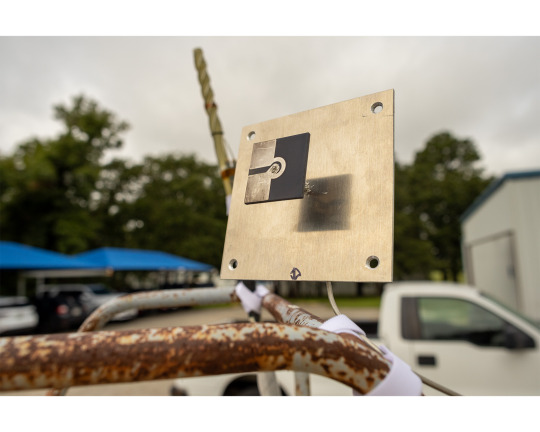
In fall 2024, NASA developed and tested a 3D-printed antenna to demonstrate a low-cost capability to communicate science data to Earth. The antenna, tested in flight using an atmospheric weather balloon, could open the door for using 3D printing as a cost-effective development solution for the ever-increasing number of science and exploration missions.
For this technology demonstration, engineers from NASA’s Near Space Network designed and built a 3D-printed antenna, tested it with the network’s relay satellites, and then flew it on a weather balloon.
The 3D printing process, also known as additive manufacturing, creates a physical object from a digital model by adding multiple layers of material on top of each other, usually as a liquid, powder, or filament. The bulk of the 3D-printed antenna uses a low electrical resistance, tunable, ceramic-filled polymer material.
Using a printer supplied by Fortify, the team had full control over several of the electromagnetic and mechanical properties that standard 3D printing processes do not. Once NASA acquired the printer, this technology enabled the team to design and print an antenna for the balloon in a matter of hours. Teams printed the conductive part of the antenna with one of several different conductive ink printers used during the experiment.
For this technology demonstration, the network team designed and built a 3D-printed magneto-electric dipole antenna and flew it on a weather balloon. [JF1] A dipole antenna is commonly used in radio and telecommunications. The antenna has two “poles,” creating a radiation pattern similar to a donut shape.
The antenna, a collaboration between engineers within NASA’s Scientific Balloon Program and the agency’s Space Communications and Navigation (SCaN) program, was created to showcase the capabilities of low-cost design and manufacturing.
Following manufacturing, the antenna was assembled and tested at NASA’s Goddard Space Flight Center in Greenbelt, Maryland, in the center’s electromagnetic anechoic chamber.
The anechoic chamber is the quietest room at Goddard — a shielded space designed and constructed to both resist intrusive electromagnetic waves and suppress their emission to the outside world. This chamber eliminates echoes and reflections of electromagnetic waves to simulate the relative “quiet” of space.
To prepare for testing, NASA intern Alex Moricette installed the antenna onto the mast of the anechoic chamber. The antenna development team used the chamber to test its performance in a space-like environment and ensure it functioned as intended.
Once completed, NASA antenna engineers conducted final field testing at NASA’s Columbia Scientific Balloon Facility in Palestine, Texas, before liftoff.
The team coordinated links with the Near Space Network’s relay fleet to test the 3D-printed antenna’s ability to send and receive data.
The team monitored performance by sending signals to and from the 3D-printed antenna and the balloon’s planned communications system, a standard satellite antenna. Both antennas were tested at various angles and elevations. By comparing the 3D-printed antenna with the standard antenna, they established a baseline for optimal performance.
During flight, the weather balloon and hosted 3D-printed antenna were tested for environmental survivability at 100,000 feet and were safely recovered.
For decades, NASA’s Scientific Balloon Program, managed by NASA’s Wallops Flight Facility in Virginia, has used balloons to carry science payloads into the atmosphere. Weather balloons carry instruments that measure atmospheric pressure, temperature, humidity, wind speed, and direction. The information gathered is transmitted back to a ground station for mission use.
The demonstration revealed the team’s anticipated results: that with rapid prototyping and production capabilities of 3D printing technology, NASA can create high-performance communication antennas tailored to mission specifications faster than ever before.
Implementing these modern technological advancements is vital for NASA, not only to reduce costs for legacy platforms but also to enable future missions.
The Near Space Network is funded by NASA’s SCaN (Space Communications and Navigation) program office at NASA Headquarters in Washington. The network is operated out of NASA’s Goddard Space Flight Center in Greenbelt, Maryland.
By Kendall Murphy NASA’s Goddard Space Flight Center, Greenbelt, Md.
0 notes
Text
NASA Wallops to Support January Sounding Rocket Launch
A suborbital rocket is scheduled to launch from NASA’s Wallops Flight Facility in Virginia during a window extending from Monday, Jan. 13, through Thursday, Jan. 16. This launch supports the Missile Defense Agency, Naval Surface Warfare Center, Port Hueneme Division’s White Sands Detachment, and other Department of Defense organizations. No real-time launch status updates will be […] Continue…
0 notes
Text
Events 10.28 (after 1920)
1922 – Italian fascists led by Benito Mussolini march on Rome and take over the Italian government. 1928 – Indonesia Raya, now the national anthem of Indonesia, is first played during the Second Indonesian Youth Congress. 1940 – World War II: Greece rejects Italy's ultimatum. Italy invades Greece through Albania a few hours later. 1942 – The Alaska Highway first connects Alaska to the North American railway network at Dawson Creek in Canada. 1948 – Paul Hermann Müller is awarded the Nobel Prize in Physiology or Medicine for his discovery of the insecticidal properties of DDT. 1948 – Ecological disaster in Donora, Pennsylvania. 1949 – An Air France Lockheed Constellation crashes in the Azores, killing all 48 people on board. 1956 – Hungarian Revolution: A de facto ceasefire comes into effect between armed revolutionaries and Soviet troops, who begin to withdraw from Budapest. Communist officials and facilities come under attack by revolutionaries. 1954 – Aeroflot Flight 136 crashes near Krasnoyarsk, killing 19. 1958 – John XXIII is elected Pope. 1962 – The Cuban Missile Crisis ends and Premier Nikita Khrushchev orders the removal of Soviet missiles from Cuba. 1965 – Pope Paul VI promulgates Nostra aetate, by which the Roman Catholic Church officially recognizes the legitimacy of non-Christian faiths. 1971 – Prospero becomes the only British satellite to be launched by a British rocket. 1982 – The Spanish general election begins fourteen years of rule by the Spanish Socialist Workers' Party. 1990 – Georgia holds its only free election under Soviet rule. 1995 – The Baku Metro fire sees 289 people killed and 270 injured. 2006 – A funeral service takes place at the Bykivnia graves for Ukrainians who were killed by the Soviet secret police. 2007 – Cristina Fernández de Kirchner becomes the first directly elected female President of Argentina. 2009 – The 28 October 2009 Peshawar bombing kills 117 and wounds 213. 2009 – NASA successfully launches the Ares I-X mission, the only rocket launch for its short-lived Constellation program. 2009 – US President Barack Obama signs the Matthew Shepard and James Byrd Jr. Hate Crimes Prevention Act. 2013 – Five people are killed and 38 are injured after a car crashes into barriers at Tiananmen Square in China. 2014 – A rocket carrying NASA's Cygnus CRS Orb-3 resupply mission to the International Space Station explodes seconds after taking off from the Mid-Atlantic Regional Spaceport in Wallops Island, Virginia. 2018 – Jair Bolsonaro is elected president of Brazil with 57 million votes, with Workers' Party candidate Fernando Haddad as the runner-up. It is the first time in 16 years that a Workers' Party candidate is not elected president.
0 notes
Link
0 notes
Text
NASA Salisbury U. Enact Agreement for Workforce Development
NASA and Salisbury University (SU) in Maryland signed a collaborative Space Act Agreement Thursday, March 28, 2024, opening new opportunities at the agency’s Wallops Flight Facility in Virginia for students in science, technology, engineering, and mathematics (STEM) fields. The agreement forges a formal partnership to identify research and engineering projects and activities at Wallops designed […] from NASA https://ift.tt/D3Z7IGB
3 notes
·
View notes
Text

My son Joseph is over the moon since, through SSAI, he will serve as Media Intern at the Virginia Space Flight Academy’s Space Adventure Camp at NASA's Wallops Flight Facility, Wallops Island, VA starting Saturday, July 6, 2024. The Space Adventure Camp is a residential camp experience on aerospace, coding and robotics for kids 11-16 years of age. Congratulations, Joseph! Thank you, SSAI!
0 notes
Text

Three Black Brant IX sounding rockets are set to launch from NASA’s Wallops Flight Facility in Virginia for the Atmospheric Perturbations around Eclipse Path (APEP) mission on April 8, 2024, at 2:40 p.m. EDT. These rockets aim to study the effects on Earth's upper atmosphere when sunlight temporarily dims due to an eclipse.
You can watch the launches live on Wallops’ YouTube from 2:30 p.m. EDT. If the weather permits, the launches might be visible in the mid-Atlantic region.
Members of the public are invited to the NASA Wallops Visitor Center to view the rocket launches and the partial eclipse. The center will host solar-related activities, and experts will be available for questions. Globe Program expert Brian Campbell will demonstrate how to use the Observer app to collect data during the eclipse. Food trucks and eclipse glasses will be available at the event.
A sensory-friendly quiet area will be set up at the visitor center for guests who prefer a quieter environment, equipped with dimmed lighting and touch items for exploration.
For safe solar viewing during the eclipse, visit NASA’s Eclipse Safety page.
Media Contact Amy Barra
NASA's Wallops Flight Facility is located on the scenic Wallops Island in Virginia.
Source Link: NASA Wallops to Launch Three Sounding Rockets During Solar Eclipse
0 notes
Text




Three rockets will ignite Poker Flat’s 2025 launch season
Three NASA sounding rockets are set to launch from Poker Flat Research Range as early as Tuesday to learn more about three types of aurora — black, flickering and fast-pulsating.
The launch window is Jan. 21 through Feb. 5.
The University of Alaska Fairbanks Geophysical Institute owns Poker Flat, located at Mile 30 Steese Highway, and operates it under a contract with NASA’s Wallops Flight Facility, part of the agency’s Goddard Space Flight Center.
The launches will be the first of the season. As of April 2024, Poker Flat had launched 350 major sounding rockets and about 1,800 meteorological rockets in its 55-year history.
To receive updates about the launches, text PFRRLAUNCHES to 866-485-7614. Updates and a live feed will be provided on the Poker Flat Facebook page.
Probing the black aurora
The Black and Diffuse Aurora Science Surveyor mission is led by Marilia Samara of Goddard Space Flight Center.
Scientists want to understand the processes that create an optical aurora variation known as the black aurora, the result of a significant decrease in auroral particle precipitation in localized regions. Black auroras are dark and separate structured regions embedded within a larger and faint diffuse aurora.
“We want to know about the electrons inside regions of black aurora — how many, their energies and in which directions they are moving,” Samara said.
Diffuse aurora are usually not visible to the unaided eye because they are so spread out and faint. Observers in regions with frequent and intense auroras are more likely to see them.
To viewers, black auroras seem to cut out sections of auroral light. They move with the aurora and sometimes appear to move through the background aurora.
Samara, who focuses on aurora research, is quite familiar with Poker Flat. She last launched a rocket as lead investigator in March 2014 with an experiment aimed at improving understanding of the electron precipitation that creates the aurora. She has served as co-investigator on several other Poker Flat missions, including last year’s Beam-PIE, as well as for ground-based imaging campaigns as a postdoctoral researcher.
Samara’s doctoral thesis at Dartmouth College focused on electromagnetic waves created inside the aurora and used data from several NASA rockets launched at Poker Flat.
A double shot for aurora answers
The Ground Imaging to Rocket investigation of Auroral Fast Features mission consists of two rockets and aims to study the fastest observable auroral variations: the flickering aurora and the fast-pulsating aurora. The two are similar but have notable differences.
“Flickering has very regular periodicities, while fast-pulsating contains fairly random modulations,” said principal investigator Robert Michell, also with Goddard Space Flight Center.
“They are caused by electromagnetic waves interacting with electron distributions in space, scattering the electrons,” he said. “They are caused by different types of waves in different regions of space.”
The mission aims to learn about the wave-particle interactions.
Michell is also familiar with Poker Flat and was a co-investigator on Samara’s 2014 launch. He has supported many missions over the last 20 years, starting with the 2005 CASCADES mission to study plasma processes associated with the aurora. He was the lead graduate student from Dartmouth College.
The motor failure on the CASCADES mission is what led Michell into using ground-based optical imaging and radar observations to study the same plasma processes the rocket was targeting. As a result, Michell has conducted extensive ground-based auroral imaging and incoherent scatter radar campaigns from Poker Flat.
•••
Other agencies and institutions involved in the two missions include the Air Force Academy; UAF; Dartmouth College; University of California, Berkeley; University of Maryland; and Catholic University.
UAF participants in the two missions include professor Peter Delamere of the Geophysical Institute and College of Natural Science and Mathematics, Poker Flat chief scientist Don Hampton, Professor Emeritus Hans Nielsen and research professor Paul Bernhardt.
NASA will use two-stage Black Brant IX rockets for both missions. The 40-foot rockets can reach altitudes of more than 200 miles, making them ideal for studying auroras, solar physics and the upper atmosphere.
Optical auroral observations for both missions will be made at a Geophysical Institute observing site in Venetie, on the Teedriinjik (formerly Chandalar) River north of the Arctic Circle.
In addition to launching sounding rockets, Poker Flat is home to several scientific instruments designed to study the atmosphere and ionosphere. Poker Flat is the world’s only scientific rocket launching facility owned by a university.
Poker Flat will also be the site of a three-rocket launch in late March. That mission, led by UAF professor Mark Conde, will study the density, wind and composition perturbations that occur in Earth’s far upper atmosphere during auroral substorms.
3 notes
·
View notes